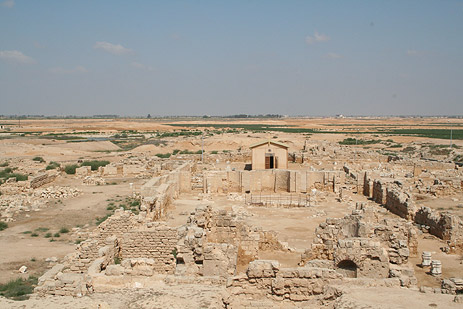Image Resource Bank
Image Gallery |  13 of 15
13 of 15 
Abu Mina
The monastery of St. Menas flourished as a very important and very active site of devout pilgrimage. It honors a late third or fourth-century martyr. It was situated on the edge of Egypt’s Western Desert, but not forbiddingly far from Alexandria. It may have been the largest Christian monastic establishment in the fifth and sixth centuries. Pilgrims took away decorated ceramic flasks (showing St. Menas flanked by two kneeling camels) of its holy water as souvenirs and for curative purposes to many distant parts of the Later Roman Empire. It was overrun and wrecked in the political and military religious upheavals of the seventh century CE. The site is important for understanding the nature of early Christian monasticism.
Name: Abu Mina (Abu Mena)
Material: Stone
Size: Unknown
Date: 4th to 7th centuries CE
Place of Origin: Egypt (about 45 km southwest of Alexandria)
Location: Egypt (about 45 km southwest of Alexandria)
Source and Registration#: Wikimedia Commons. Link to resource![]()
Creative Commons Copyright![]()
Attribution: Einsamer Schütze
License: Creative Commons Attribution 3.0 Unported![]() . (accessed April 1, 2010).
. (accessed April 1, 2010).

 Walter E. Kaegi
Walter E. Kaegi
Professor of History, University of Chicago




